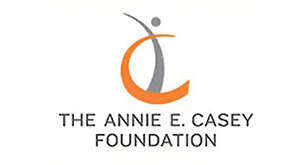Despite improvements in many key measures, the United States is still failing its children, especially kids of color, as too many children are blocked from reaching essential milestones of well-being. Wide and persistent disparities are hindering American Indian or Alaska Native, Black and Latino young people in particular, and all children in every state generally. This could have potentially devastating consequences for the country, according to the Annie E. Casey Foundation’s 2024 Race for Results® report.
“We need children of every race and ethnicity to grow up ready to provide the talent, intellect and hard work that will make our country strong and prosperous,” says Leslie Boissiere, vice president of external affairs at the Casey Foundation. “This country of great abundance, creativity and possibility can — and must — make better policy choices to eliminate the barriers kids face.”
The report’s Race for Results index standardizes scores across 12 indicators that represent well-being milestones from cradle to career, converting them into a scale ranging from 0 to 1,000 to make it easy to compare and see differences across states and racial and ethnic groups. The 2024 index also introduces a new group — children of two or more races — who now make up 5% of the U.S. child population. National index scores ranged from 386 for Black children to 771 for Asian and Pacific Islander children. Calculations of the index for all 50 states show that experiences vary widely depending on where a child lives, from a high of 877 for Asian and Pacific Islander children in New Jersey to a low of 180 for American Indian or Alaska Native children in South Dakota.
A sampling of other key points:
- Reading and math scores tumbled during the pandemic. In 2022, only a third of all fourth graders were proficient in reading. The figure was about 1 in 6 for Black (16%) and American Indian or Alaska Native (18%) and 1 in 5 Latino (20%) children.
- On poverty, between 2007-11 and 2017–21, there were gains among every demographic group, but too many families still struggle to make ends meet. More than half of Black (58%), American Indian or Alaska Native (57%) and Latino (53%) kids live below 200% of the federal poverty level.
- Living in immigrant families can have a mixed effect, with children generally more likely to be born at a normal birth weight, but less likely to be proficient in reading and math.
- There are bright spots. In 2017–21, the share of children living in low-poverty neighborhoods increased for all demographic groups compared with 2007-11, with a jump of 12 percentage points for Latino children.

